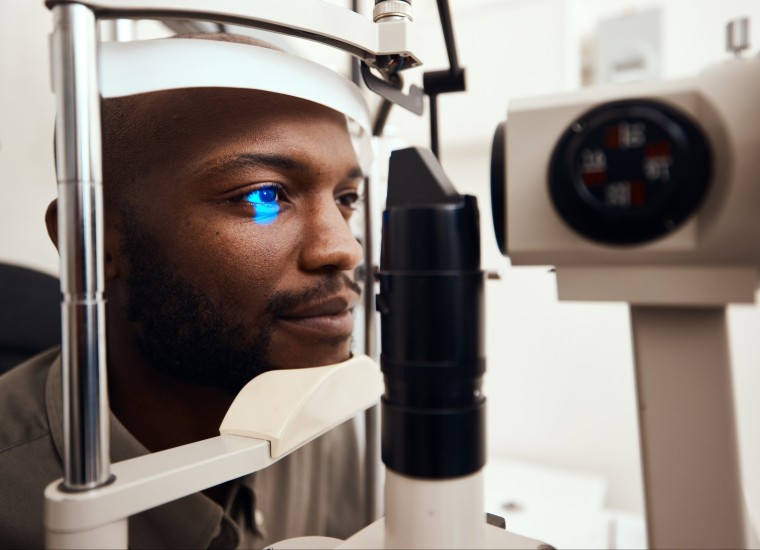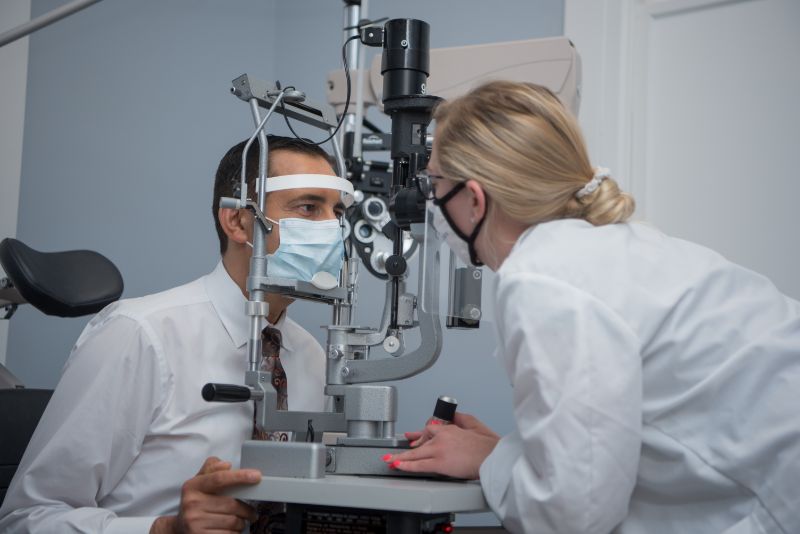Your Resident Eye Doctor Optometrist: Committed to Clear Vision in Riverside
Your Resident Eye Doctor Optometrist: Committed to Clear Vision in Riverside
Blog Article
The Comprehensive Eye Exam: What to Anticipate Throughout Your Visit to the Eye Doctor
A check out to the eye medical professional for a detailed eye examination is even more than a regular exam; it is an important action in securing your visual health. What precisely occurs throughout the eye health and wellness analysis, and how does it influence the prescription procedure?
Initial Appointment
The initial assessment throughout an eye exam acts as a vital foundation for understanding a person's visual health requirements. This stage establishes the tone for the entire exam process, permitting the optometrist to collect necessary info concerning the person's clinical history, way of living, and certain vision worries. By meticulously assessing any type of pre-existing problems, drugs, or previous surgical procedures, the eye treatment professional can customize the evaluation to resolve specific needs effectively.

Additionally, the first consultation is an opportunity for individuals to articulate any kind of questions or issues, cultivating a collective partnership with their healthcare provider. This communication not only ensures that the person really feels notified and comfy but additionally empowers them to participate proactively in their eye health and wellness management. Jointly, these discussions enable the optometrist to develop an individualized examination plan, making certain ideal care and specific diagnosis.
Aesthetic Acuity Test
Kicking off the core parts of an eye examination, the visual skill examination is developed to evaluate the sharpness and quality of an individual's vision. This vital assessment aids determine just how well an individual can recognize letters or symbols at a standard distance, normally making use of a Snellen graph (Eye Doctor). The chart makes up rows of letters that decrease in dimension from leading to base, with the patient positioned at a customary range of 20 feet
During the examination, the client is asked to cover one eye and review out loud the tiniest line of letters they can see plainly. This procedure is repeated for the various other eye. The results are recorded as a portion, with 20/20 vision showing typical visual skill-- where the patient can see at 20 feet what a person with regular vision can see at that distance.
The visual skill test additionally determines possible refractive mistakes such as myopia, astigmatism, or hyperopia, which may require restorative lenses. By developing a standard of visual performance, the examination is an important analysis device that assists the eye care professional in establishing an appropriate treatment plan tailored to the patient's distinct aesthetic requirements.
Eye Wellness Evaluation
Adhering to the aesthetic skill examination, a comprehensive eye health assessment is conducted to guarantee the overall well-being of the eyes. see here This essential section of the eye test includes an extensive evaluation of both the external and internal structures of the eye.
Next, interest changes to the inner frameworks. Through using ophthalmoscopy or fundus digital photography, the retina, optic nerve, and blood vessels are meticulously examined. This step is essential for determining problems such as retinal detachment, glaucoma, or diabetic person retinopathy. Oftentimes, student dilation is performed to enhance presence of the internal eye structures, although this might cause momentary light level of see here sensitivity for the person.
In addition, intraocular stress is measured to screen for glaucoma risk. This is typically done making use of tonometry, which can spot elevated stress levels that could recommend possible damages to the optic nerve. Jointly, these analyses form an extensive analysis to keep ocular health.
Refraction and Prescription
Refraction is a sophisticated procedure carried out by eye care specialists to identify the accurate lens power needed to fix refractive errors such as nearsightedness, presbyopia, hyperopia, and astigmatism. The goal of this procedure is to examine how light bends as it passes via the eye, enabling the practitioner to figure out whether corrective lenses are required for boosted aesthetic skill.
During the refraction procedure, the client is asked to check out a phoropter, a tool which contains numerous lenses. The specialist will methodically alter these lenses and ask the patient to compare clearness in between choices till the very best feasible vision is attained. This treatment is critical in crafting an exact prescription that defines the appropriate lens power for spectacles or get in touch with lenses.
The prescription stemmed from this treatment not only enhances vision yet additionally offers as a structure for choosing appropriate rehabilitative glasses. It is vital to ensure that prescriptions are consistently updated, as changes in vision can take place with time, highlighting the relevance of regular eye evaluations. This meticulous attention to detail helps keep clear, comfortable vision in life.
Follow-Up Recommendations

During a follow-up check out, the eye medical professional will certainly perform a series of tests to evaluate visual skill and check for any modifications in vision that may require an update to the prescription. In addition, the follow-up provides an opportunity to talk about any kind of pain or issues experienced with existing glasses. Changes can be made to ensure comfort and efficacy, whether through lens adjustment or framework modifications.
For people with continuous problems such as glaucoma, diabetes-related eye issues, or macular deterioration, even more frequent follow-ups might be needed. These appointments are important for taking care of and potentially reducing the development of eye condition. Complying with these recommendations can substantially add to preserving visual health and wellness and protecting against long-term issues.
Final Thought
The thorough eye test is a necessary process for preserving aesthetic health and wellness, encompassing a detailed evaluation of medical background and vision concerns. Secret parts consist of the aesthetic acuity examination, which evaluates eyesight quality, and the eye wellness analysis, which examines the overall condition of the eyes.
A browse through to the eye physician for a thorough eye test is more than a routine examination; it is a crucial step in protecting your aesthetic health and wellness.Kicking off the core elements of an eye examination, the visual acuity test is developed to analyze the sharpness and quality of a client's vision.Following the visual skill examination, a comprehensive eye wellness assessment is carried out to guarantee the overall well-being of the eyes. These brows through enable the eye care specialist to keep track of modifications in vision, update prescriptions, and examine the general health of the eyes. Key parts consist of the aesthetic skill examination, which reviews eyesight clearness, and the eye health analysis, which takes a look at the general condition of the eyes.
Report this page